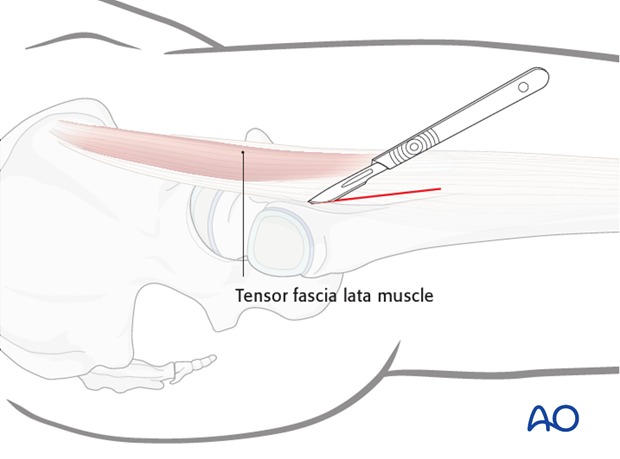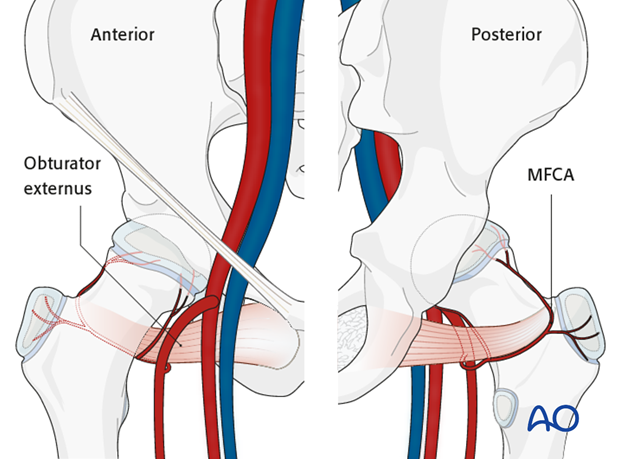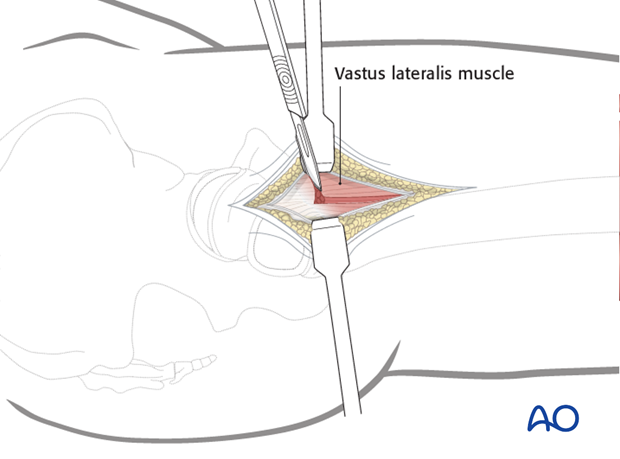Lateral approach to the pediatric proximal femur
1. Indications
The lateral approach is indicated in the following situations:
- In combination with an anterior approach for the insertion of screws or a pediatric hip locking plate
- For the open and closed reduction and stabilization of extracapsular fractures
- For stabilization of nondisplaced intracapsular fractures

2. Vascular anatomy
The deep branch of the medial femoral circumflex artery provides the main relevant blood supply to the femoral head.
The medial femoral circumflex artery originates from the deep femoral artery (profunda femoris), courses between the iliopsoas and pectineus muscles, and runs posteriorly between the femur and the pelvis.
During its course, a small branch supplies the inferior retinaculum (ligament of Weitbrecht).
The main branch of the medial femoral circumflex artery is related to the inferior border of the obturator externus muscle and passes posterior to the femur, towards the intertrochanteric crest.
It then crosses posterior to the obturator externus and anterior to the triceps coxae (obturator internus and the superior and inferior gemelli).
Before crossing the triceps coxae, a small branch passes to the greater trochanter.
The vessel enters the joint capsule between the gemellus superior and the piriformis muscles.
Note: The approach must always be cranial to the piriformis muscle. This anatomical detail is crucial when starting to prepare the capsule.
After perforating the capsule, the vessel passes along the superior retinaculum and splits into 3-4 branches.
Provided the obturator externus muscle remains intact, it will protect the medial femoral circumflex artery.

3. Skin incision
The incision should be placed so that the screws in the femoral neck are aligned with the axis of the neck.
If a plate is to be inserted, the incision will be prolonged distally and of sufficient length to allow adequate distal fixation.
Image intensification may be helpful for proper siting of the incision.

4. Development
The fascia lata is incised in line with the incision. Having incised the origin of the vastus lateralis muscle with a longitudinal or L-shaped cut, the muscle is elevated from the femur.
Angular stable plates require sufficient distal extension of the incision to accommodate the drill guides and jigs.

5. Wound closure
The wound is closed in layers according to the surgeon's preference.













